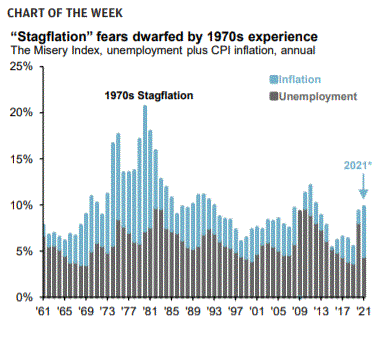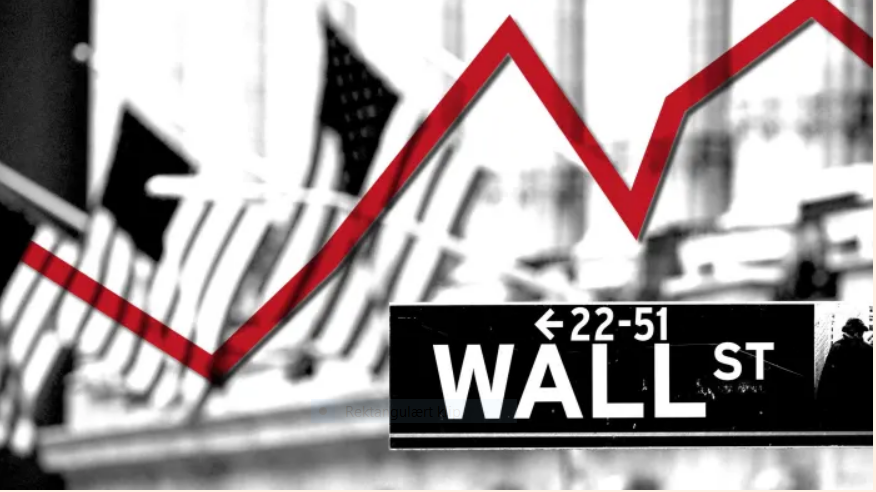Ifølge JPMorgan kan investorerne lige så godt vænne sig til det: Vi er på vej ind i en periode, der minder om stagflation trods pæn vækst, og så er der ikke mange sektorer, som automatisk stiger. Vi får ikke stagflation som i 70’erne, men inflationen bliver højere end tidligere, og der kommer modvind for at række virksomheder og sektorer, f.eks. med øgede lønomkostninger. Det bliver vanskeligere at være investor. Derfor bliver stock-picking vigtigere end før.
Uddrag fra JPMorgan:
Thought of the week
After two consecutive disappointing monthly jobs reports, rising wages and inflationary pressures that look more persistent than expected, worries are mounting that the U.S. may be entering a period of “stagflation.”
The term is often used to describe the 1970s, when economic conditions were characterized by high unemployment and high inflation. Economists quantified this situation by compiling the “Misery Index,” which takes the sum of the unemployment and inflation rates.

However, the Misery Index is nowhere close to its levels in the 1970s. We also don’t have the “stag” in stagflation. The overall labor market recovery has been robust and economic growth is set to be remarkably strong this year, despite a temporary delta-driven slowdown. While union power was an important driver of the wage-price spiral in the 1970s, the decline in union membership and the impact of globalization make this kind of wage-price spiral unlikely.
While supply chain strains may keep inflation elevated well into 2022, we do expect inflation to moderate toward the Fed’s 2% target and for growth to regain steam in the first half of 2022. As investors regain conviction, cyclical equities should re-take the baton from more defensive sectors.
Nevertheless, we expect inflation in this expansion to be significantly higher than the last long expansion, presenting an opportunity for active management to select the companies most protected from these headwinds and levered to the growth trends of this economic cycle.




